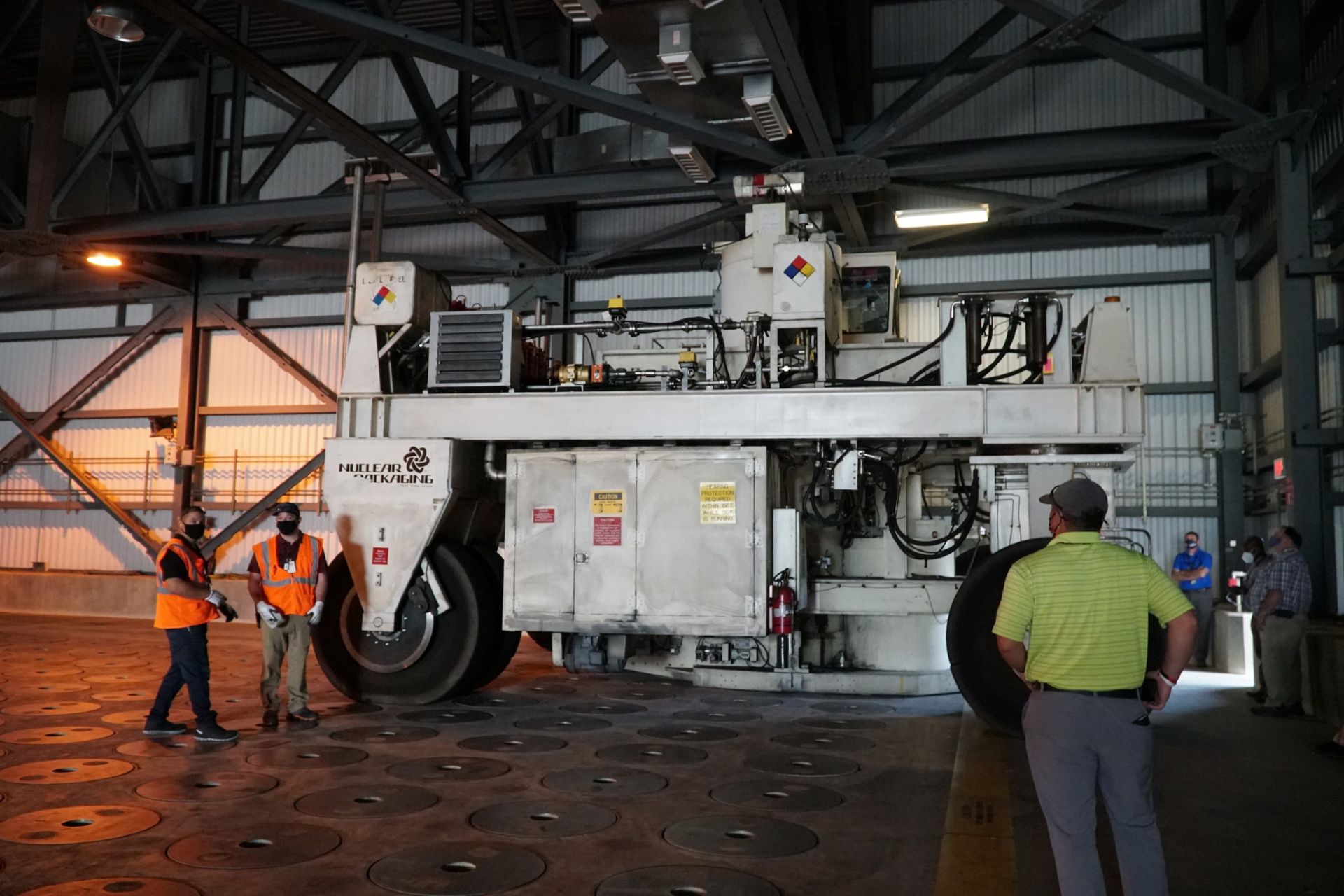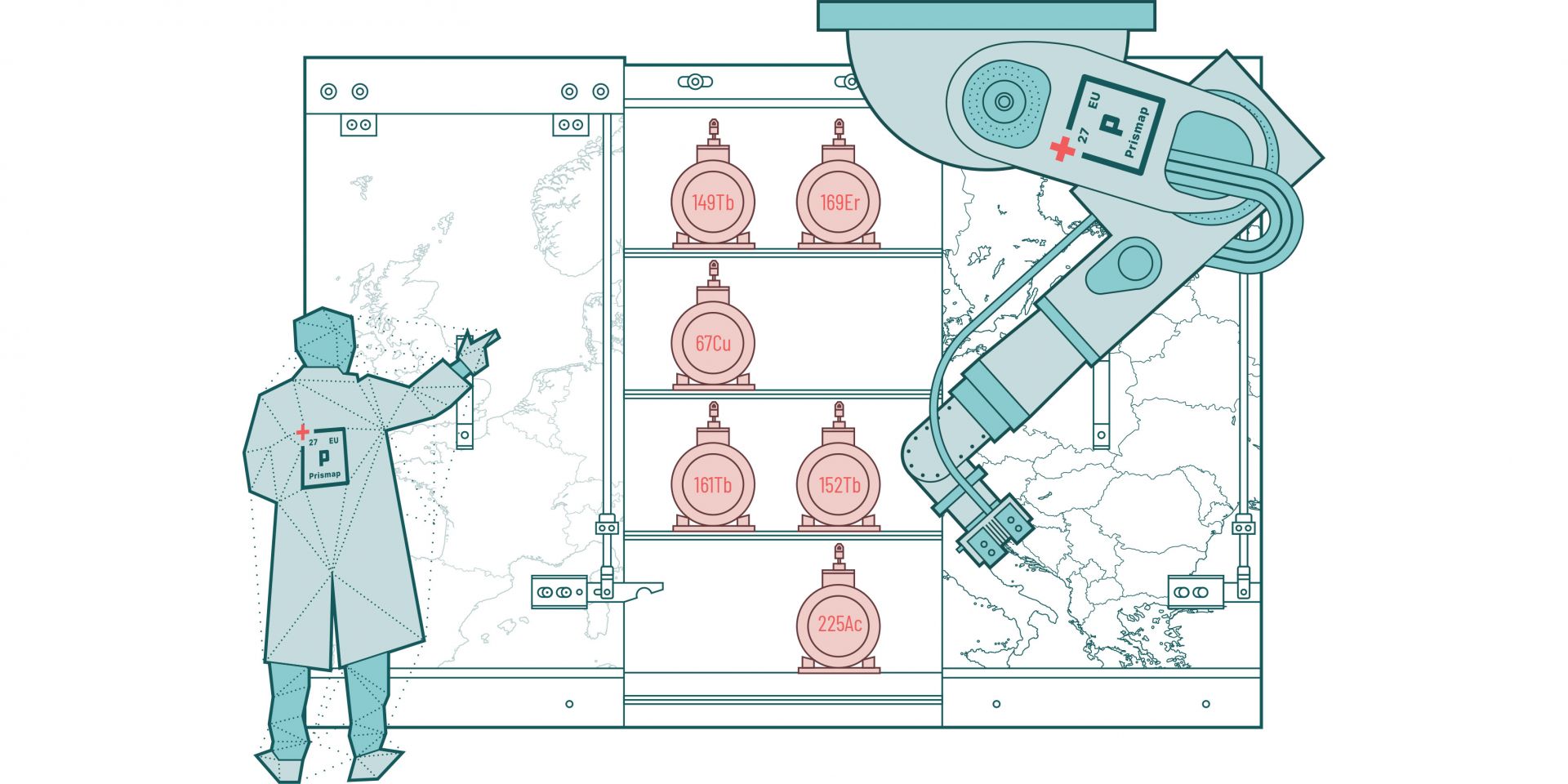A rendering of the core of the NBSR, which consists of 30 aluminum-cladded plate-type U3O8 fuel elements with a 17.8-cm gap between elements. (Image: NCNR Technical Working Group, Root Cause Investigation of February 2021 Fuel Failure)
(CLICK IMAGE TO ENLARGE)
The National Institute of Standards and Technology (NIST) has submitted two reports and supplemental information to the Nuclear Regulatory Commission after conducting a root cause analysis of the February 2021 fuel failure and resultant alert at the NIST Center for Neutron Research (NCNR) in Gaithersburg, Md. While the 20-MWt NCNR research reactor remains shut down, scuttling the plans of researchers who rely on it as a source of both cold and thermal neutrons, NIST states in an October 4 update that it has requested permission to restart the reactor, contingent upon meeting all 18 corrective actions identified.
(University of Rochester illustration/Michael Osadciw)
The U.K. government has just published Towards Fusion Energy: The UK Government’s Fusion Strategy, which sets out the goal of the United Kingdom's moving from “a fusion science superpower to a fusion industry superpower,” with a prototype fusion power plant being built in the country by 2040.
While a slightly ambitious plan, there are now about 20 startup companies working to achieve a Wright brothers’ moment in fusion sooner than that. This includes Commonwealth Fusion Systems, which is aiming for a working fusion power plant by 2030 and is the subject of Rivka Galchen’s October 4 New Yorker article, “Can Nuclear Fusion Put the Brakes on Climate Change?”
Illustration of a normal human heart showing ventricles and valves. (Image: Patrick J. Lynch, medical illustrator; C. Carl Jaffe, M.D., cardiologist)
Therapeutic radiation is typically reserved for cancer treatment, but scientists at Washington University School of Medicine in St. Louis have applied radiation therapy to treat ventricular tachycardia, a life-threatening heart arrhythmia. A news release issued by the university says that the results of the study show that radiation therapy can “reprogram” heart muscle cells to “a younger and perhaps healthier state.” The findings were published in the journal Nature Communications on September 24.
Savannah River Remediation workers double-stack HLW canisters in an underground vault in Savannah River’s Glass Waste Storage Building 2 using a one-of-a-kind shielded canister transporter. (Photo: DOE)
The Department of Energy’s Office of Environmental Management (EM) has demonstrated the capability to expand the double-stacking of high-level waste canisters at the Savannah River Site in South Carolina. That approach will save the site’s cleanup program millions of dollars, according to the DOE.
The Sodium Pump Test Facility was the last DOE building to be demolished at the Energy Technology Engineering Center site in California. (Photo: DOE)
The demolition of the final of 18 DOE-owned buildings at the Energy Technology Engineering Center (ETEC) has been completed, according to the DOE. The ETEC is the former liquid metals research facility located at the Santa Susana Field Laboratory (SSFL), northwest of Los Angeles.
Bruce nuclear power plant in Ontario, Canada. (Photo: Bruce Power)
The first of eight 160-ton steam generators for Unit 6 at Canada’s Bruce nuclear power plant was installed last week as part of the facility’s major component replacement project. “Congrats to the MCR team and our partners, including @AeconGroup, @Framatome_CA, @UEandC, @mammoetglobal, @BWXT, and others who contributed to this historic moment,” Bruce Power tweeted on September 30.
The component was fabricated at BWXT Canada’s Cambridge, Ontario, location and was shipped to the Bruce site in late 2020, as shown in this video.
The vendor responsible for generator removal is the Steam Generator Replacement Team (SGRT), a 50-50 joint venture between Aecon and the Steam Generating Team, itself a partnership between Framatome and United Engineers & Constructors. In July, Framatome announced that SGRT had been awarded an approximately C$350 million (about $278 million) contract by Bruce Power to replace the steam generators at Units 3 and 4.
River Bend nuclear power plant
The Nuclear Regulatory Commission has proposed a $150,000 fine to Entergy Operations after conducting investigations that identified three willful violations of agency requirements at the company’s River Bend nuclear power plant. Located in Francisville, La., River Bend houses a 974-MWe boiling water reactor.
A conceptual image of collaboration across Europe. (Image: PRISMAP/SCIPROM)
Only a few of the more than 3,000 radioisotopes that scientists have synthesized in the laboratory are regularly used in diagnostic or therapeutic medicine. One significant barrier to the development of new medical radioisotopes is the difficulty of gaining access to radionuclides during the early stages of development and research. PRISMAP is a new medical radionuclide program designed to streamline that access for medical research in the European Union and the United Kingdom.
Map of the PJM Interconnection territory in dark blue. Image: PJM
A proposal by PJM Interconnection to modify the Federal Energy Regulatory Commission’s contentious minimum offer price rule (MOPR) order went into effect by default on Wednesday after the commission failed to take action on it.
According to a notice from the FERC secretary, “In the absence of commission action on or before September 28, 2021, PJM’s proposal became effective by operation of law. Accordingly, the effective date of the proposed tariff sheets is September 29, 2021. The commission did not act on PJM’s filing because the commissioners are divided two against two as to the lawfulness of the change.”
Workers perform maintenance during Byron’s refueling outage. (Photo: Exelon)
Exelon Generation announced yesterday that it is investing more than $300 million in capital projects at its Byron and Dresden nuclear plants in Illinois over the next five years and filling some 650 vacant positions across the state.
These actions are in response to Illinois Gov. J.B. Pritzker’s recent signing of S.B. 2408, the hard-won legislation that rescued the nuclear facilities from premature retirement.
















